You searched for: %E6%BE%B3%E5%A4%A7%E5%88%A9%E4%BA%9A%E8%B5%8C%E5%9C%BA%E7%BD%91%E5%9D%80%2C%E6%BE%B3%E5%A4%A7%E5%88%A9%E4%BA%9A%E7%BD%91%E4%B8%8A%E8%B5%8C%E5%9C%BA%2C%E3%80%90www.22kk33.com%2C%E5%A4%8D%E5%88%B6%E6%89%93%E5%BC%80%E7%BD%91%E5%9D%80%E3%80%91%2C%E6%BE%B3%E5%A4%A7%E5%88%A9%E4%BA%9A%E5%8D%9A%E5%BD%A9%E5%85%AC%E5%8F%B8%2C%E6%BE%B3%E5%A4%A7%E5%88%A9%E4%BA%9A%E5%8D%9A%E5%BD%A9%E7%BD%91%E7%AB%99%2C%E6%BE%B3%E5%A4%A7%E5%88%A9%E4%BA%9A%E8%B5%8C%E7%90%83%E7%BD%91%E5%9D%80%2C%E6%BE%B3%E5%A4%A7%E5%88%A9%E4%BA%9A%E8%B5%8C%E5%8D%9A%E7%BD%91%E7%AB%99%2C%E6%BE%B3%E6%B4%B2%E5%8D%9A%E5%BD%A9app%2C%E6%BE%B3%E6%B4%B2%E8%B5%8C%E7%9B%98%2C%E6%BE%B3%E5%A4%A7%E5%88%A9%E4%BA%9A%E5%8D%9A%E5%BD%A9%E5%B9%B3%E5%8F%B0%2C%E6%BE%B3%E5%A4%A7%E5%88%A9%E4%BA%9A%E5%9C%A8%E7%BA%BF%E8%B5%8C%E5%9C%BA%2C%E5%A2%A8%E5%B0%94%E6%9C%AC%E7%9A%87%E5%86%A0%E8%B5%8C%E5%9C%BA%2C%2C22kk33.com%E7%BD%91%E5%9D%80KAgxcEExxBBgddfBd
<< Previous | Displaying results 101-150 of 170 for "%E6%BE%B3%E5%A4%A7%E5%88%A9%E4%BA%9A%E8%B5%8C%E5%9C%BA%E7%BD%91%E5%9D%80%2C%E6%BE%B3%E5%A4%A7%E5%88%A9%E4%BA%9A%E7%BD%91%E4%B8%8A%E8%B5%8C%E5%9C%BA%2C%E3%80%90www.22kk33.com%2C%E5%A4%8D%E5%88%B6%E6%89%93%E5%BC%80%E7%BD%91%E5%9D%80%E3%80%91%2C%E6%BE%B3%E5%A4%A7%E5%88%A9%E4%BA%9A%E5%8D%9A%E5%BD%A9%E5%85%AC%E5%8F%B8%2C%E6%BE%B3%E5%A4%A7%E5%88%A9%E4%BA%9A%E5%8D%9A%E5%BD%A9%E7%BD%91%E7%AB%99%2C%E6%BE%B3%E5%A4%A7%E5%88%A9%E4%BA%9A%E8%B5%8C%E7%90%83%E7%BD%91%E5%9D%80%2C%E6%BE%B3%E5%A4%A7%E5%88%A9%E4%BA%9A%E8%B5%8C%E5%8D%9A%E7%BD%91%E7%AB%99%2C%E6%BE%B3%E6%B4%B2%E5%8D%9A%E5%BD%A9app%2C%E6%BE%B3%E6%B4%B2%E8%B5%8C%E7%9B%98%2C%E6%BE%B3%E5%A4%A7%E5%88%A9%E4%BA%9A%E5%8D%9A%E5%BD%A9%E5%B9%B3%E5%8F%B0%2C%E6%BE%B3%E5%A4%A7%E5%88%A9%E4%BA%9A%E5%9C%A8%E7%BA%BF%E8%B5%8C%E5%9C%BA%2C%E5%A2%A8%E5%B0%94%E6%9C%AC%E7%9A%87%E5%86%A0%E8%B5%8C%E5%9C%BA%2C%2C22kk33.com%E7%BD%91%E5%9D%80KAgxcEExxBBgddfBd" | Next >>
-
Mina Beker
ID CardMina, born Mina Friedman, was the youngest of four daughters born to a Jewish family in the Lithuanian town of Jonava. At the age of 18, Mina married Osser Beker, a lumber dealer. The couple settled in Jonava where Mina worked as a seamstress. The Bekers had two sons and two daughters, but their oldest son died in a childhood accident. 1933-39: Mina's son Abe attended a Jewish religious school in Jonava. But since Mina had received an extensive Jewish education, she decided to teach her daughters at home.…

-
Judith Beker
ID CardJudith was one of three children born to a Yiddish-speaking Jewish family living on a farm near the Lithuanian town of Jonava. Judith's mother had an extensive Jewish education and taught her daughters at home. Her son, Abe, attended a Jewish religious school in Jonava. Judith's father worked in the logging industry. 1933-39: In the fall of 1938, six months after her father died, Judith and her mother moved to Kovno, the capital of Lithuania. She was 9 years old. Kovno at that time had a large Jewish…

-
Abraham Malnik describes massacre in Kovno's Ninth Fort, near the Kovno ghetto
Oral HistoryAbraham came from a wealthy family that was ordered into the Kovno ghetto after the Germans occupied Lithuania in 1941. Abraham's mother urged his father to flee, but he returned for them. Begging for mercy, he was able to save them from a massacre in the Ninth Fort, one of several forts around Kovno. Abraham and his father survived internment in five camps before they were finally liberated in the Theresienstadt ghetto. Abe's mother perished at the Stutthof camp.
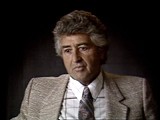
-
Robert Wagemann describes fleeing from a clinic where, his mother feared, he was to be put to death by euthanasia
Oral HistoryRobert and his family were Jehovah's Witnesses. The Nazis regarded Jehovah's Witnesses as enemies of the state for their refusal to take an oath of loyalty to Adolf Hitler, or to serve in the German army. Robert's family continued its religious activities despite Nazi persecution. Shortly before Robert's birth, his mother was imprisoned briefly for distributing religious materials. Robert's hip was injured during delivery, leaving him with a disability. When Robert was five years, he was ordered to report…

-
Fürstengrube
ArticleLearn about Fürstengrube subcamp of Auschwitz, including its establishment, administration, prisoner population, and forced labor and conditions in the camp.
-
On the waiting list for American visas
DocumentSelmar and Elsa Biener joined the waiting list for US immigration visas in September 1938. Their waiting list numbers—45,685 and 45,686—indicate the number of people who had registered with the US consulate in Berlin. By September 1938, approximately 220,000 people throughout Germany, mostly Jews, were on the waiting list.
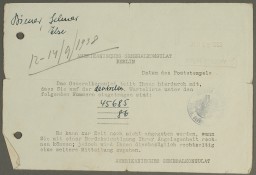
-
Theresienstadt: Transit Camp for Czech Jews
ArticleLearn more about Theresienstadt’s function as a transit camp and the deportation of Czech Jews during World War II.
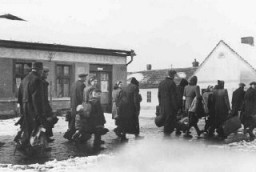
-
The Doctors Trial: The Medical Case of the Subsequent Nuremberg Proceedings
ArticleThe Medical Case, or Doctors Trial, was Case #1 of 12 Subsequent Nuremberg Proceedings against leading German industrialists, military figures, SS perpetrators, and others.

-
Life After the Holocaust: Norman Salsitz
ArticleAfter WWII and the fall of the Nazi regime, Holocaust survivors faced the daunting task of rebuilding their lives. Listen to Norman Salsitz's story.
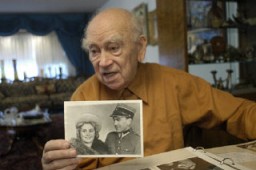
-
Japanese American Relocation
ArticleLearn more about the forcible relocation of some 120,000 people of Japanese descent living in the US to “relocation centers.”

-
Law for the Imposition and Implementation of the Death Penalty
ArticleLearn more about the Law for the Imposition and Implementation of the Death Penalty, which the Nazis enacted after the Reichstag Fire Decree in 1933.
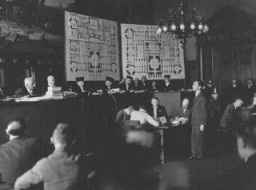
-
German air campaign in the Low Countries
FilmThe Junkers (Ju) 87, known as the "Stuka," spearheaded the Blitzkrieg ("lightning war") attacks that were decisive in the western campaign in 1940. Stuka dive-bombers closely supported German ground forces. They destroyed enemy strong points, aircraft, and airfields, and spread panic in rear areas. Although slow and easily shot down by Allied fighters, the Stukas proved devastatingly effective in the German invasions of Poland and western Europe, where Germany enjoyed superiority in the air. Stukas caused…
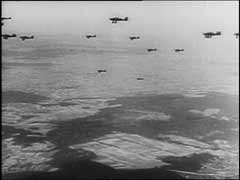
-
Stand Fast
SongErich Frost (1900–87), a musician and devout Jehovah's Witness, was active in the religious resistance to Hitler's authority. Caught smuggling pamphlets from Switzerland to Germany, he was imprisoned in the Sachsenhausen concentration camp near Berlin where he composed this song in 1942. Later deported to a labor camp at Alderney, Channel Islands, Frost survived the war and returned to Germany to serve the Watchtower Society. "Fest steht," reworked in English as "Forward, You Witnesses," is among the…
-
The United States: Isolation-Intervention
ArticleWhen WWII began, most Americans wanted the US to stay isolated from the war. From December 1941, the majority rallied in support of intervention to defeat the Axis powers.

-
Israel Yitzak Kisielnicki
ID CardThe youngest of three children, Israel Yitzak was born to Jewish parents living 35 miles east of Warsaw in the small, predominantly Jewish town of Kaluszyn. Israel's mother was a housewife, and his father was a merchant who often traveled on business, by horse and wagon, to Warsaw. Israel attended public school and also received religious instruction. 1933-39: When Germany invaded Poland several days ago, many kids Israel's age, afraid of what would happen if the Germans occupied Poland, fled to the USSR,…

-
Reichstag Fire Decree
ArticleThe Reichstag Fire Decree of February 1933 restricted individual freedoms, and allowed Hitler's government to overrule state and local laws and overthrow state and local governments.

-
John Demjanjuk: Prosecution of A Nazi Collaborator
ArticleJohn Demjanjuk, initially convicted as “Ivan the Terrible,” was tried for war crimes committed as a collaborator of the Nazi regime during the Holocaust.
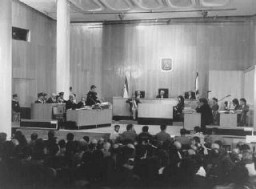
-
Hermann Ludwig Maas
ArticleHermann Ludwig Maas, a Protestant pastor in Heidelberg, Germany, was a rescuer and clergyman who stood in solidarity with the Jewish community.
-
Dr. Robert Ritter visits a "Gypsy camp"
PhotoDr. Robert Ritter talks to several residents in a Zigeunerlager ("Gypsy camp"). Hamburg, Germany, 1940. During the Nazi era, Dr. Robert Ritter was a leading authority on the racial classification of people pejoratively labeled “Zigeuner” (“Gypsies”). Ritter’s research was in a field called eugenics, or what the Nazis called “racial hygiene.” Ritter worked with a small team of racial hygienists. Among them were Eva Justin and Sophie Ehrhardt. Most of the people whom Ritter studied and…

-
Eva Justin interviews a Romani woman interned in a "Gypsy camp"
PhotoA color photograph of Eva Justin interviewing a Romani woman interned in a "Gypsy camp." Vienna, Austria, 1940. During the Nazi era, Dr. Robert Ritter was a leading authority on the racial classification of people pejoratively labeled “Zigeuner” (“Gypsies”). Ritter’s research was in a field called eugenics, or what the Nazis called “racial hygiene.” Ritter worked with a small team of racial hygienists. Among them were Eva Justin and Sophie Ehrhardt. Most of the people whom Ritter studied and…

-
A family interned in a "Gypsy camp"
PhotoA family stands outside of their wagon while interned in a Zigeunerlager ("Gypsy camp"). In the background, children are crowded around Eva Justin. Justin worked for the Center for Research on Racial Hygiene and Demographic Biology. Schleswig-Holstein, Germany, 1938. During the Nazi era, Dr. Robert Ritter was a leading authority on the racial classification of people pejoratively labeled “Zigeuner” (“Gypsies”). Ritter’s research was in a field called eugenics, or what the Nazis called…

-
Lodz
ArticleNazi authorities established the Lodz ghetto in 1940. Learn about living conditions and forced labor in the ghetto, as well as deportations to and from there.

-
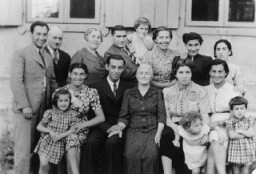
-
Lend-Lease
ArticleLearn more about the Lend-Lease Act, which was the American policy that extended material aid to the WWII Allied powers from 1941-1945.

-
The 69th Infantry Division during World War II
ArticleThe 69th Infantry Division participated in major WWII campaigns and is recognized for liberating the Leipzig-Thekla subcamp of Buchenwald in 1945.
-
Lithuania
ArticleAs part of the Holocaust, the Germans murdered about 90% of Jews in Lithuania. Read more about the tragic experience of Lithuanian Jews during World War II.

-
Terez Goldberger Kalman
ID CardTerez came from a religious Jewish family. She and her husband, Samuel, raised eight children in Satoraljaujhely, in northeastern Hungary. The Kalmans lived on the outskirts of the city, and in the 1920s they ran a canteen for the soldiers who lived in the nearby barracks. The Kalmans were proud Hungarians; one of their sons had died in World War I. 1933-39: Since Samuel died a few years ago, Terez has been alone here in her house in Satoraljaujhely. Many of her children live nearby, though, so her home…
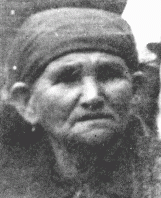
-
Nazi Territorial Aggression: The Anschluss
ArticleThe Anschluss, Germany's annexation of Austria in March 1938, was the Nazi German regime’s first act of territorial aggression and expansion. Learn more.
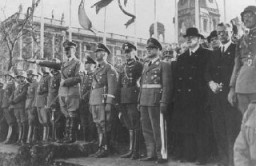
-
David Morgensztern
ID CardThe second of four children, David, or Duvid as he was called by his family, was born to Jewish parents living 35 miles east of Warsaw in the small predominantly Jewish town of Kaluszyn. David's mother and grandmother ran a newspaper kiosk in town, and his father worked as a clerk in the town hall. David attended public elementary school. 1933-39: War has broken out between Poland and Germany. Many people are afraid of what might happen if the Germans occupy Poland and have decided to flee to the Soviet…
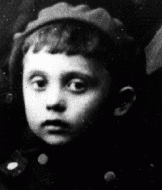
-
Jakab Katz
ID CardJakab, a religious Jew, was the father of eight children. In the early 1900s he sailed to America, paying his way by shoveling coal on the ship. In New York he earned enough money to help two of his daughters immigrate. Returning to Buj, he eventually moved his family to Zalkod, a small town in northeastern Hungary. There, helped by his wife, Terez, and his son, Miklos, he ran a store and a farm. 1933-39: Jakab's daughter, Sadie, and her two children, Lillian and Arthur, are visiting from America. The…
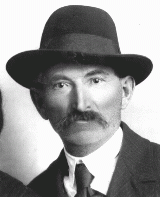
-
Ritchie Boys
Article“Ritchie Boys” is a term used for American soldiers who trained at Camp Ritchie during World War II. Several thousand were Jewish refugees from Europe. Learn more.
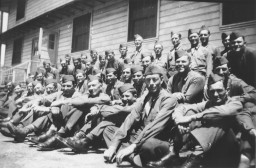
-
Brandenburg T4 Facility
ArticleBrandenburg was one of six killing centers the Nazis established to murder patients with disabilities under the so-called "euthanasia" program.
-
Law on the Head of State of the German Reich
ArticleThe Law on the Head of State of the German Reich was the last step in destroying democracy in interwar Germany and making Adolf Hitler a dictator. Learn more.
-
Nazi Persecution of Jehovah's Witnesses
ArticleJehovah's Witnesses were subjected to intense persecution under the Nazi regime. Read more to learn why and how the Nazi regime targeted them.

-
Theresienstadt
ArticleThe Theresienstadt camp/ghetto served multiple purposes during its existence from 1941-45 and had an important propaganda function for the Germans. Learn more.

-
Aliyah Bet
ArticleLearn more about Aliyah Bet, the clandestine immigration of Jews to Palestine between 1920 and 1948, when Great Britain controlled the area.

-
Persecution of Roma (Gypsies) in Prewar Germany, 1933–1939
ArticleBeginning in 1933, the Nazis persecuted Roma (often pejoratively called “Gypsies”) based on underlying prejudices and racism. Learn how this harassment escalated to genocide.

-
Ban on Jehovah's Witness Organizations
Timeline EventApril 1, 1935. On this date, the German government banned all Jehovah's Witness organizations.

-
Refugees Today
ArticleAs of mid-2022, there were about 27 million refugees. Learn more about these refugees, the violence they face, and the global impact of the refugee crisis.

-
Theresienstadt: Concentration/Transit Camp for German and Austrian Jews
ArticleLearn about the role of Theresienstadt in the deportation of German and Austrian Jews to killing sites and killing centers in the east.

-
Eleanor Roosevelt
ArticleEleanor Roosevelt, longest serving First Lady in US history, used her social and political influence to intervene on behalf of refugees before and during WWII.
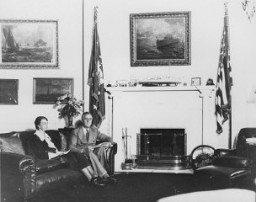
-
International Military Tribunal: The Defendants
ArticleListing of the 24 leading Nazi officials indicted at the International Military Tribunal at Nuremberg. Learn about the defendants and the charges against them.
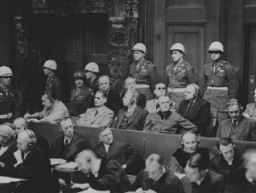
-
Herzogenbusch Main Camp (Vught)
ArticleThe Herzogenbusch concentration camp in the Netherlands began functioning in January 1943. Learn about its establishment, administration, prisoners, and conditions there.

-
Air war in Flanders: Western Campaign
FilmThe Junkers (Ju) 87, known as the "Stuka," spearheaded the Blitzkrieg ("lightning war") attacks that were decisive in the western campaign in 1940. Stuka dive-bombers closely supported German forces on the ground. They destroyed enemy strong points, aircraft, and airfields, and spread panic in rear areas. Although slow and easily shot down by Allied fighters, the Stukas proved devastatingly effective in the German invasions of Poland and western Europe, where Germany enjoyed air superiority. Stuka…

-
Aron Tabrys
ID CardAron was the second of six children born to Jewish parents in Vilna, a city known as a center of Jewish cultural life. He was called Arke by his friends and family. Aron's father supported his large family on the meager income of a chimney sweep. 1933-39: As a child Aron attended a Jewish day school, and then went on to attend a public secondary school. When he was 14 his father had an accident which rendered him blind, and Aron had to start working full-time to support the family. Aron belonged to an…

-
Eva Gredinger
ID CardEva was one of three children born to Jewish parents in Vertujeni, a Bessarabian town that was 90 percent Jewish. Eva attended a public school. Her family was religious, attending synagogue every day. Eva's father made his living as a kosher butcher, preparing chicken according to Jewish dietary laws. 1933-39: In 1936, when Eva was 15 years old, her family moved to Vysoka, where she later got a job as a seamstress. Vysoka was very different from her hometown. There were only about 15 Jewish families in…

-
Janusz Piotrowski
ID CardJanusz was the eldest of four children born to Catholic parents in Plock, a town located in a rural area north of Warsaw. His father was an accountant. Janusz attended local schools, and became active in scouting. 1933-39: Janusz went to Warsaw to study civil engineering. On September 1, 1939, the Germans began bombing Warsaw. One week later, all able-bodied men who had not been mobilized were directed to retreat east. On September 17, Janusz was 90 miles from the Romanian border. That night, the Soviets…

-
Tomasz (Toivi) Blatt
ID CardTomasz was born to a Jewish family in Izbica, a Polish town whose largely religious Jewish community comprised more than 90 percent of the population. Tomasz's father owned a liquor store. 1933-39: In September 1939, a drum sounded in the marketplace, calling the town to assemble for a news report. Germany had invaded Poland. More news arrived shortly; the Soviet Union was invading from the east. Tomasz and his family didn't know what to do. Some people said to run to the Soviet side; many, including his…

-
William Denson describes postwar trials of concentration camp personnel
Oral HistoryWilliam Denson graduated from the US Military Academy at West Point in 1934 and attended Harvard Law School. He returned to West Point to teach law from 1942 until 1945. In January 1945, Denson accepted the position of Judge Advocate General (JAG) in Europe and was assigned to US Third Army headquarters in Germany. He took part in more than 90 trials against Germans who had committed atrocities against downed American pilots. In August 1945, Denson became chief prosecutor for the US government at the…

-
William Denson describes counsel provided to accused war criminals
Oral HistoryWilliam Denson graduated from the US Military Academy at West Point in 1934 and attended Harvard Law School. He returned to West Point to teach law from 1942 until 1945. In January 1945, Denson accepted the position of Judge Advocate General (JAG) in Europe and was assigned to US Third Army headquarters in Germany. He took part in more than 90 trials against Germans who had committed atrocities against downed American pilots. In August 1945, Denson became chief prosecutor for the US government at the…

